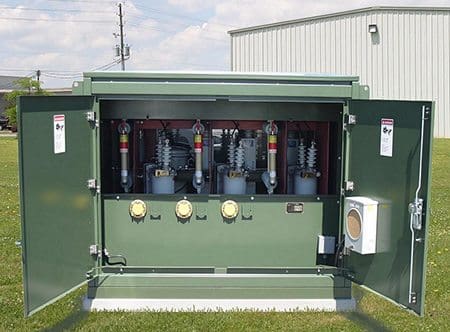Properly sizing a transformer for a commercial building is a crucial task that ensures efficient power distribution, minimizes energy losses, and prevents electrical hazards. Commercial electricians play a vital role in determining the right transformer size, considering factors such as load demand, voltage requirements, and future expansion needs. Selecting the wrong transformer size can lead to inefficiencies, increased operational costs, and potential safety risks. Below is a step-by-step guide on how to properly size a transformer for a commercial building.
Understanding the Power Requirements
The first step in sizing a transformer is understanding the total power requirement of the commercial building. Commercial electricians calculate the total load demand by summing up the power ratings of all electrical appliances, lighting, HVAC systems, and other equipment. Load demand is typically measured in kilovolt-amperes (kVA), which represents the apparent power required by the building.
To determine the total kVA requirement, commercial electricians follow this formula:
Total kVA = (Total Watts) / (Power Factor × Voltage)
Power factor plays a crucial role in transformer sizing, as it accounts for the efficiency of electrical power usage in the building. Most commercial buildings have a power factor ranging between 0.8 and 0.95, depending on the type of loads present.
Determining Primary and Secondary Voltage Requirements
Transformers are used to step down or step up voltage levels to match the operational needs of a building. Commercial electricians must identify the primary voltage (incoming utility voltage) and secondary voltage (required operational voltage) before selecting a transformer. Common commercial building voltage ratings include:
- Primary Voltage: 480V, 600V, or higher, depending on the utility provider.
- Secondary Voltage: 208V, 240V, or 120V, based on equipment and lighting requirements.
Selecting a transformer with the correct voltage conversion ensures that all electrical systems operate safely and efficiently.
Calculating the Transformer kVA Rating
Once the total kVA load and voltage requirements are determined, commercial electricians select a transformer with an appropriate kVA rating. A general rule is to size the transformer slightly above the calculated kVA demand to allow for future expansion and avoid overloading.
The kVA rating can be determined using the formula:
Transformer kVA = (Load Voltage × Load Current) / 1,000
For example, if the total load requires 150A at 208V:
kVA = (208 × 150) / 1,000 = 31.2 kVA
In this case, choosing a 37.5 kVA transformer would provide a buffer for potential load increases.
Considering Transformer Efficiency and Temperature Ratings
Transformer efficiency is another critical factor to consider. High-efficiency transformers reduce energy losses and operational costs. Commercial electricians look for energy-efficient transformers that comply with DOE (Department of Energy) standards to improve sustainability and cost-effectiveness.
Additionally, the transformer’s temperature rating impacts its longevity and performance. Ensuring proper ventilation and installing transformers with appropriate cooling mechanisms, such as liquid-filled or dry-type cooling, helps prevent overheating and extends service life.
Accounting for Harmonics and Non-Linear Loads
Many commercial buildings house electronic devices, such as computers, LED lighting, and HVAC systems, that generate harmonics and non-linear loads. These loads can cause transformer overheating and inefficiencies. To counteract these issues, commercial electricians may recommend a K-rated transformer, specifically designed to handle harmonic distortions and ensure stable power distribution.
Allowing for Future Expansion and Load Growth
A well-sized transformer should accommodate future expansion needs. Commercial electricians typically select a transformer with at least 20% extra capacity to account for additional equipment, business growth, or increased power consumption. Installing an undersized transformer can lead to frequent overloading, reduced efficiency, and potential failure, whereas an oversized transformer may result in unnecessary costs.
Ensuring Compliance with Electrical Codes and Safety Standards
Commercial electricians follow the National Electrical Code (NEC) and local regulations when sizing transformers. Proper grounding, surge protection, and circuit breaker coordination ensure safe operation and compliance with safety standards. Failure to adhere to these regulations can result in electrical hazards, code violations, and costly fines.
Conclusion
Properly sizing a transformer for a commercial building requires careful consideration of power demand, voltage requirements, efficiency, and future expansion. Commercial electricians play a crucial role in assessing these factors to ensure optimal performance, energy efficiency, and compliance with safety regulations. By following a systematic approach and using accurate calculations, commercial electricians can select the right transformer, ultimately reducing energy costs, minimizing downtime, and enhancing the overall reliability of electrical systems in commercial buildings.





